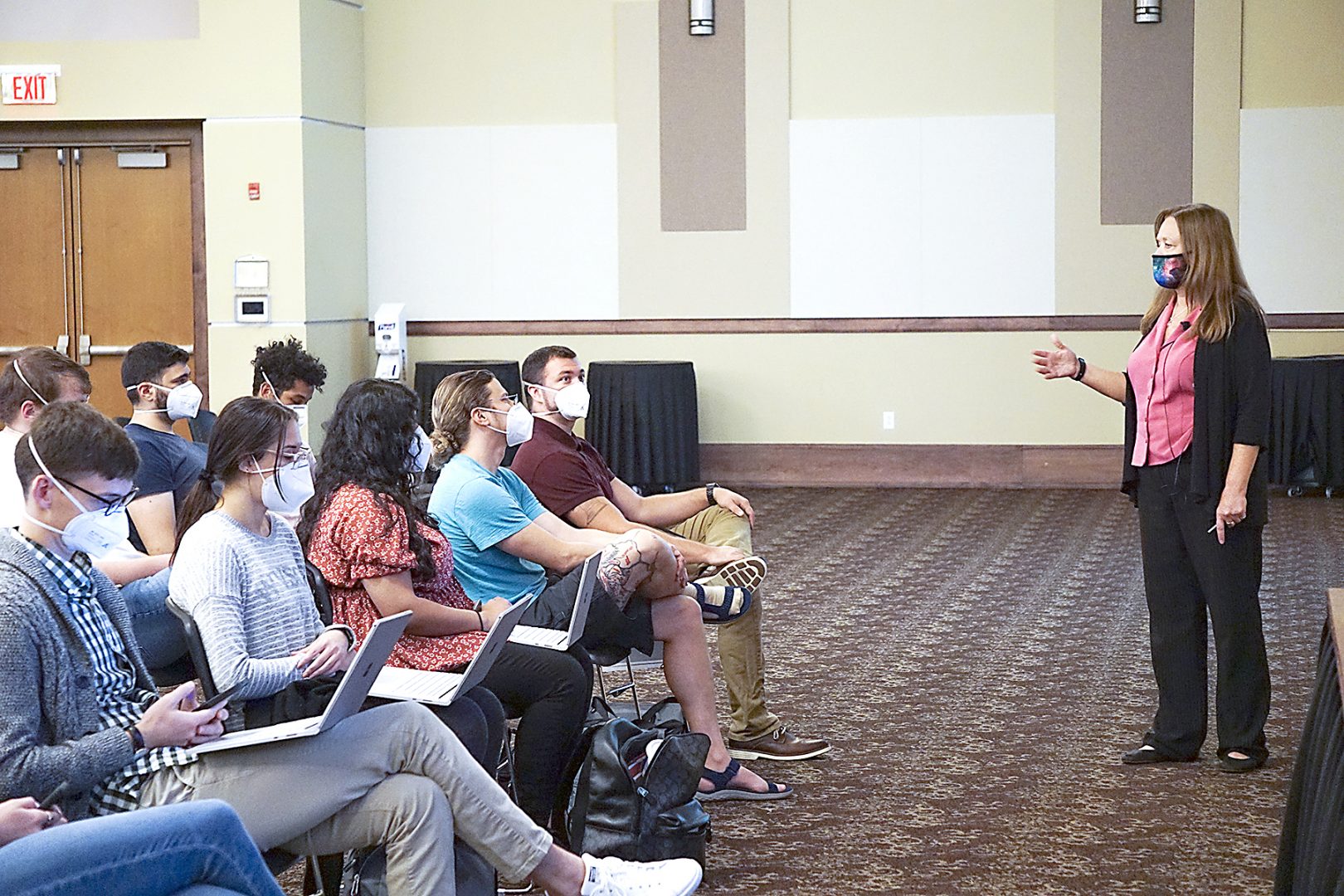
In a state noted to be among those most affected by the opioid epidemic, one medical school in West Virginia is taking a bold step in working to prevent drug overdose deaths.
As part of the White Coat Ceremony that marks the start of first-year students’ medical school journeys, all 214 members of the West Virginia School of Osteopathic Medicine’s (WVSOM) Class of 2025 will receive the medication Narcan to carry with them in case they encounter an overdose victim in a nonmedical setting. Narcan is a brand of naloxone, a drug that can block the effects of opioids and potentially prevent the death of someone who is experiencing an overdose.
On Aug. 23, first-year students gathered in the Conference Center in the WVSOM Student Center to be trained in administering Narcan, which is required before an individual can receive the life-saving medication. Barbara Holt, education coordinator for WVSOM’s Center for Rural and Community Health, led a presentation that illustrated how to recognize an opioid overdose, know when Narcan is appropriate and understand the responsibilities that come with administering the medication.
Holt said WVSOM is the only medical school in West Virginia to provide naloxone to incoming students during a White Coat Ceremony. She explained that while anyone can be trained to administer naloxone, educating medical students about its use can help reduce the stigma associated with the medication, which is an important part of addressing the epidemic from a public health perspective.
“I’m pleased that the students agreed to do this,” Holt said. “Education helps people understand that the opioid crisis is a chronic disease issue, and that people with opioid use disorder have a problem with their opioid receptor due to the brain’s reaction to opioid use. You have to save a life so that person can live long enough to get into recovery, and Narcan can help do that.”
Narcan is available in three forms, and students were shown how to administer each. First-year students will receive a box containing two doses of Narcan in the form of a nasal spray, to be delivered through a single nostril.
Narcan and other naloxone medications can help a person stay alive long enough to be transported to the hospital for further help. Therefore, Holt told students, a person administering naloxone must call emergency services after a dose is given.
In West Virginia, a person who delivers an opioid antagonist in good faith to someone they believe to be experiencing an overdose is protected from criminal and civil liability, provided that emergency services are called and that no gross negligence takes place, Holt said.
Linda Boyd, D.O., WVSOM’s vice president for academic affairs and dean, said the Narcan training and distribution are tangible examples of WVSOM’s mission to serve the health needs of West Virginians.
“As the largest state medical school, it is our responsibility to equip students to be able to intervene if they see someone unconscious to potentially save a life if that is due to an opioid overdose,” Boyd said. “If more people get trained to use and carry naloxone, it can make an important public health difference in West Virginia. WVSOM students can be an important part of the solution.”
According to data from the Centers for Disease Control and Prevention, West Virginia’s drug overdose death rate was more than 2.6 times the national average in 2016.That year, there were about 52 overdose deaths per 100,000 people in the state.
The West Virginia Department of Health and Human Resources released preliminary data earlier this year indicating that 1,275 overdose deaths had been reported so far for the year 2020.


